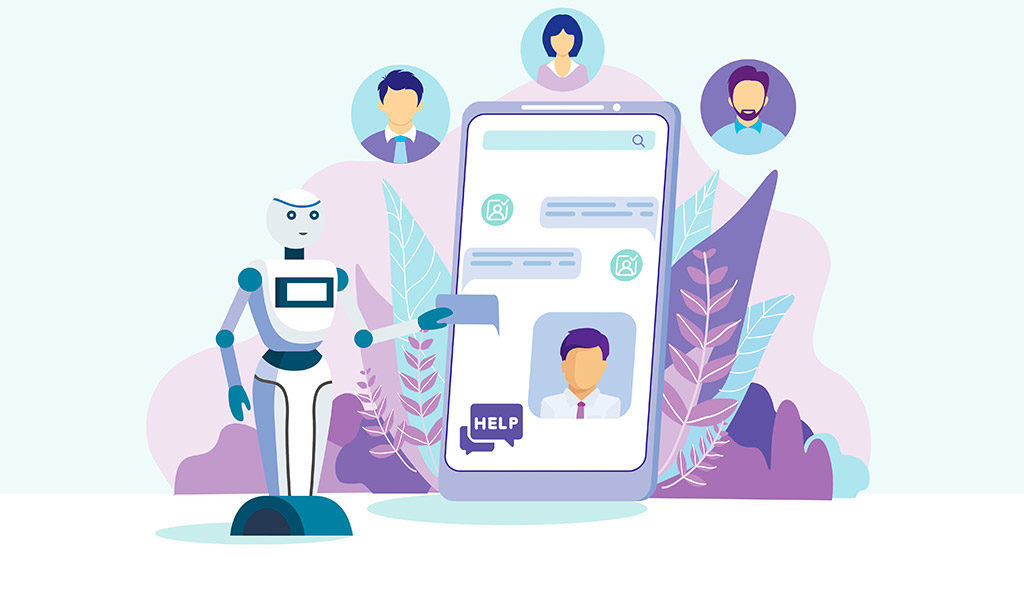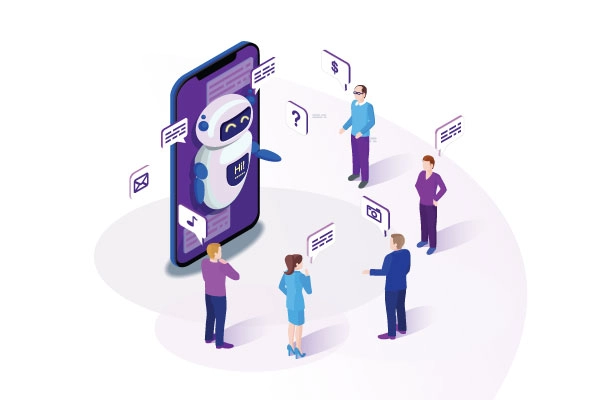Your cart is currently empty!
HR Chatbots: 5 Tips for Using Bots to Improve Employee Experience

Artificial Intelligence (AI) advancements have given rise to AI chatbots, providing an innovative way to improve employee experience and human resources (HR) management.
A chatbot simulates conversation with human users, primarily over the Internet. While these conversational interfaces have existed since the mid-1960s in some form or another, today’s AI chatbots are smarter, more human-like, and more capable of understanding complex requests than ever before.
They can integrate with applications across several industries and have numerous business applications. With those kinds of benefits on the table, it’s no wonder HR departments worldwide are looking into how they can incorporate AI chatbots into their employee experience initiatives to improve engagement, efficiency, and productivity.
They want something faster and easier than filling out forms or calling an 800 number when you have questions about taking advantage of your benefits or how to file an employee complaint or any other HR-related issue.
If you are curious to learn about how AI chatbots can help HR in the workplace, read on for five tips on using chatbots to improve employee experience in the future.
Let’s first understand
What are Chatbots?
Chatbots have seen a significant increase in recent years mainly due to the rapid expansion of messaging apps such as WhatsApp and Facebook.
By chatbots, we mean computer programs designed to simulate human conversation. These programs are used to automate customer service or support tasks and can be found in various online applications and platforms.
Chatbots usually employ natural language processing (NLP) to interpret the user’s input and generate a response. This response can be in text, images, or even audio files.
Sometimes, the chatbot may also perform specific actions, such as booking a hotel room, ordering a pizza, or resolving queries of individuals.
Chatbots are used in various industries, including customer service, marketing, and sales. Many companies use chatbots to quickly and efficiently answer common questions from customers or prospects.
What are the Different Types of Chatbots?
1) Rule-based chatbots
Rule-based chatbots are powered by rules that dictate how the chatbot should respond to specific questions or queries. We typically use this type of chatbot for customer service or support purposes, where the bot can be trained to answer common questions or help customers with specific tasks.
Rule-based chatbots are usually created using natural language processing (NLP), allowing the bot to understand and interpret human language.
This is done using a combination of machine learning, which enables the bot to learn from and remember past interactions with users to improve its understanding of their queries over time.
Rule-based chatbots are often used for customer service because they can handle many customer inquiries.
Rule-based chatbots respond to specific questions or commands that are input by the user. They use a set of predetermined rules or algorithms to determine how to respond to a particular query to offer a tailored response that is accurate and relevant.
2) AI-based chatbots
Chatbots are becoming more and more popular as we can use them for various purposes, such as customer service, lead generation, and website navigation. AI-based chatbots can provide recommendations and suggestions to users.
Artificial intelligence and machine learning powers AI-based chatbots. This technology allows chatbots to understand natural language, making them capable of carrying on a human conversation.
AI-based chatbots are the future of customer service. With natural language processing and machine learning, they can understand customer inquiries and provide accurate responses.
They also learn from each interaction, so their responses improve. This makes them the perfect solution for businesses that want to provide excellent customer service without an extensive customer service team.
Let’s now look at the five tips for using bots to improve the employee experience.
1) Make sure your chatbot can handle a high volume of employees

First and foremost, when you’re looking to improve employee experience with bots, it’s essential to make sure that your chatbot can handle a high volume of employees.
Depending on the size of your company, you may have hundreds or even thousands of employees constantly interacting with your bot. As such, your bot must be able to handle all those interactions without issue.
One way to ensure that your bot can handle a high volume of employees is to use a cloud-based solution. You can scale up or down as needed to ensure that your chatbot can always handle its demands.
Additionally, using a cloud-based solution will allow you to quickly and easily expand your bot’s capabilities if necessary.
2) Train your chatbot to recognize common HR questions and provide an accurate answer
When using bots to improve employee experience, it’s essential to train your chatbot to recognize common HR questions and provide accurate answers. This will ensure that your employees can get the information they need quickly and easily.
For example, a bot could be trained to recognize commonly asked questions like When is my next paycheck? or What time does my shift start? Once your bot has recognized a question, you can program it with an appropriate answer that will help you manage your employees easily.
Remember, if your HR chatbot will be helpful, it needs to know how to handle different types of questions! If a user asks when their next paycheck will arrive but doesn’t specify whether they’re referring to hourly pay or salary pay, the bot should know how to clarify what type of pay period is being referred to.
Once you’ve trained your HR chatbot with these kinds of follow-up questions, you’ll find that employees are more likely to use it because they feel like they’re getting an answer tailored specifically to them. This also means that you’ll have fewer employee complaints coming in.
3) Design your chatbot to be user-friendly and easy to navigate
Make sure your chatbots are easy to understand and navigate. The buttons and links are easy to find, and the chatbot provides clear instructions on how to use them.
It should have important information that is easily accessible and allows users to find the help they need easily. You can also design your chatbot to mimic how people talk to feel more natural and user-friendly.
Test it with a small group of employees before rolling it out company-wide. And be prepared to troubleshoot any glitches to address them quickly and keep your chatbot running smoothly.
Provide training on how to use your HR chatbot. Train everyone who will use your HR chatbot. This will help ensure that everyone knows how to navigate it and what information is available.
4) Enable employees to communicate with the chatbot in their preferred language

By enabling employees to communicate with the chatbot in their preferred language, you can ensure that all employees feel comfortable using the chatbot and that they can get the help they need in a language they understand.
This will improve the employee experience by providing a communication channel that is highly convenient and accessible.
Communicating with the chatbot in their preferred language makes it easier to ask questions and get answers. The chatbot can also provide employees with information about their benefits, payroll, and other topics related to their employment. This helps employees stay informed and up-to-date on the latest changes within the company. They are more likely to use it and share feedback about their experience.
You can use this as a way of gathering employee sentiment regarding changes within your organization, new benefits, and HR processes that have been implemented for the betterment of the organization.
5) Use chatbots to automate simple HR tasks
Chatbots can help automate simple HR tasks, freeing up your team to focus on more important tasks.
If you have simple HR tasks that need to be completed regularly, chatbots can be a great way to automate them. This will free up your team to focus on more important tasks and make your lives easier.
By automating some of your daily tasks, you’ll also reduce error rates and improve the employee experience. The key is knowing which tasks are best suited for automation with a chatbot and how to use them effectively.
Chatbot technology is constantly evolving. If you’re considering using chatbots in the workplace, it’s important to know what’s available and how they can be used effectively so that a new process doesn’t overwhelm your team. In order to use chatbots effectively, you need to make sure that your employees are comfortable with them and know the optimal way to use them properly.
You can also use AI powered facial recognition attendance system and employee monitoring software that allows to automatically track employee attendance and keeps track of your employees’ productivity automatically through an online dashboard or mobile app.
Conclusion
Chatbots are one of the most popular ways to interact with customers, and they can be used to great effect in the employee experience. In this blog, we’ve outlined five tips for using chatbots to improve the employee experience. We hope you find these tips helpful and that you consider using chatbots in your own organization.
We’d love to hear your thoughts. Hit us up in our comments section. We’re always open to suggestions!
We will catch up with you soon.
Until then, keep reading and keep exploring.
Thank You !!.
HR Chatbots: 5 Tips for Using Bots to Improve Employee Experience was originally published in Chatbots Life on Medium, where people are continuing the conversation by highlighting and responding to this story.